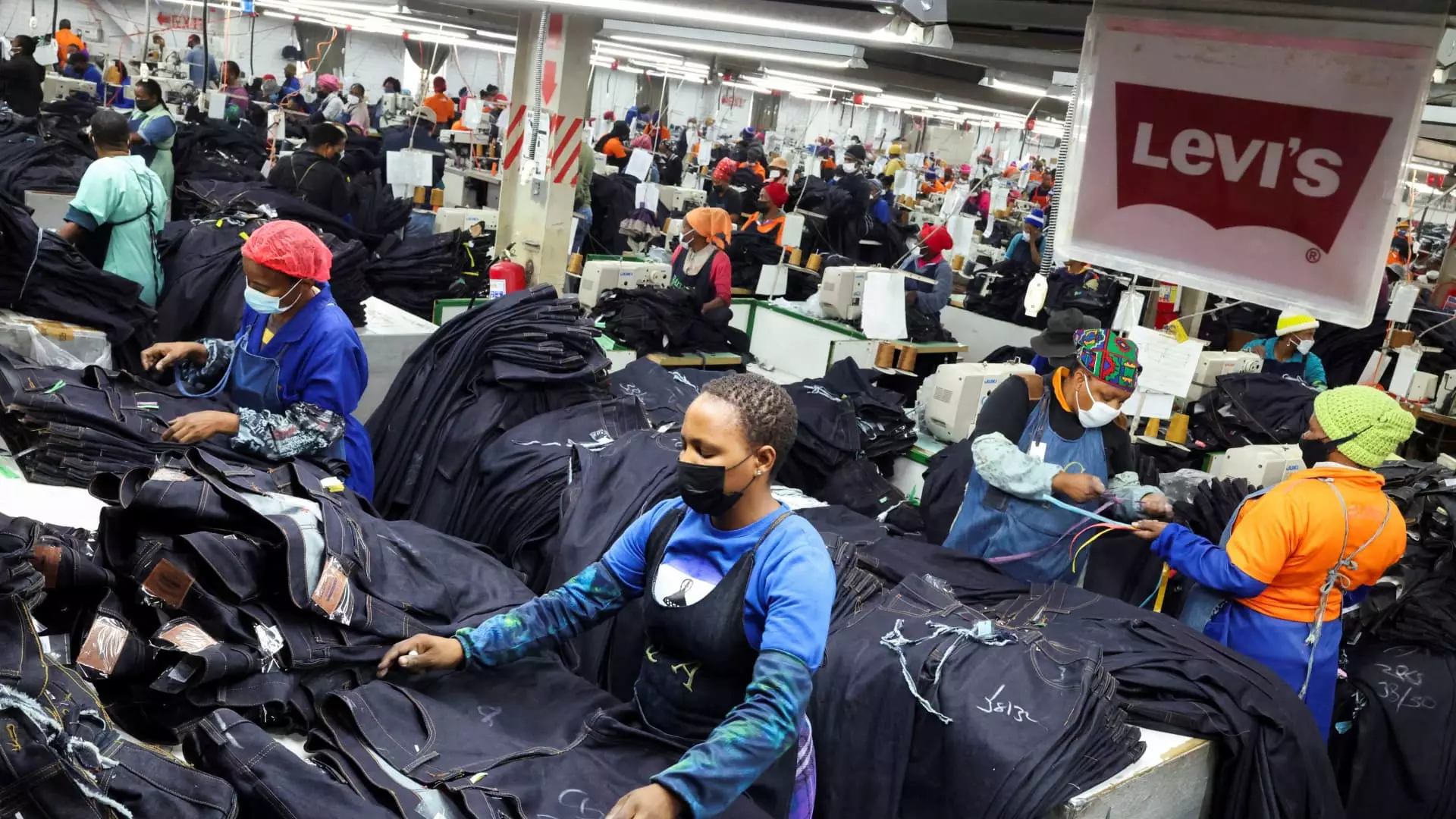Levi Strauss finds itself at a pivotal crossroads, caught between the strength of its brand and the unpredictable chaos of international trade policies. Despite beating Wall Street’s expectations in the second quarter, the company’s recent optimism about future earnings feels somewhat fragile, shadowed by geopolitical uncertainties and the volatility of tariffs. The company’s decision to raise annual guidance seems more a testament to its internal resilience than a guarantee against the mounting external threats that loom over its global supply chain.
This optimism, however, borders on overconfidence. Levi’s declaration that it can absorb tariffs worth around $30 million—less than 3 cents per share—ignores the broader reality that trade policies are anything but predictable. In an era where policies can change with presidential moods and diplomatic negotiations, relying on current tariffs as a benchmark for future performance is a risky gamble. Their strategy appears to rest on a hope that negotiations and trade relations remain static, which is fundamentally flawed, given the shifting sands of international diplomacy under the Trump administration’s approach.
The reliance on Southeast Asian manufacturing is also worth scrutinizing. Without explicit disclosure of production hubs, Levi’s masking its vulnerabilities under the guise of operational flexibility. The region’s economic landscape is inherently unstable, especially with the recent threats of tariffs on countries like Bangladesh and Indonesia—pillars for Levi’s supply chain. These countries have long been vital for affordable, high-quality apparel manufacturing, yet the specter of higher tariffs threatens to inflate costs and complicate logistics, jeopardizing Levi’s profit streams and increasing their exposure to geopolitical whims.
Market Response Masks Deeper Flaws
Levi’s recent financial performance, though visibly impressive—beating earnings expectations and raising revenue forecasts—may gloss over deeper issues. An 8% jump in stock values in after-hours trading, driven by strong quarterly results, could be mistaken for a sign of robust health. But beneath the surface lies a fragile balancing act: the company is pushing up prices, reducing promotions, and attempting to elevate premium offerings—all strategies that may temporarily boost margins but risk alienating price-sensitive consumers in an increasingly competitive market.
The company’s focus on direct-to-consumer sales—e-commerce and owned stores—demonstrates a strategic shift aligned with current retail trends. Yet, this move is not without its pitfalls. It’s a gamble that consumers continue to prioritize quality, story, and brand loyalty in an age where fast fashion and instant gratification dominate. Levi’s recent partnership with Beyoncé exemplifies the company’s need to stay culturally relevant, but such collaborations only serve as band-aids if the core product quality and brand authenticity are compromised or if broader economic headwinds curtail consumer spending.
Furthermore, Levi’s attempt to diversify beyond denim into a broader range of apparel, particularly targeting women, is promising but not yet proven sustainable. A 14% increase in women’s apparel revenue suggests that the company’s efforts are resonating, but it hinges on continued consumer appetite for a brand historically known for its masculine identity. This pivot, while strategic, risks diluting the brand’s core image if not executed carefully.
Amid Crucial Global Tensions, Can Levi’s Sustain Its Momentum?
The crux of Levi’s predicament is its exposure to international trade tensions and policy unpredictability. Its optimistic guidance appears overly reliant on assumptions that tariffs will either stay at current levels or be resolved through negotiations that are far from guaranteed. While the company attempts to mitigate costs by cutting promotions and enhancing pricing strategies, these are limited tactics—ultimately, the company’s future will depend on the political climate and whether global leaders can reach equitable trade deals.
Levi’s leadership seems to operate under an optimistic lens, emphasizing their innovative products and resilient consumer base, but they overlook the structural risks embedded within their supply chain. A significant portion of their manufacturing is in low-cost regions vulnerable to political strains. The recent threats from President Trump toward Bangladesh and Indonesia threaten to escalate costs and disrupt supply networks, challenging Levi’s ability to maintain its high-margin strategy.
There is also an inherent contradiction in Levi’s approach: recognition that tariffs could add $25 to $30 million in costs doesn’t seem to fully account for the ripple effects of trade disputes. Tariffs often lead to deeper market uncertainties, currency fluctuations, and retaliatory measures that could more profoundly impact margins than initially estimated. The company’s strategy to “absorb costs” speaks more to short-term resilience than a sustainable long-term approach in an environment of rising global instability.
Ultimately, Levi’s hopes of maintaining growth amidst these headwinds rely on consumer loyalty and brand appeal. Their efforts to reach new demographics and innovate, such as the Beyoncé collaboration, may foster engagement in the short term. However, in a broader sense, the brand’s future depends on a delicate balance: navigating unpredictable trade policies, managing global supply chain risks, and maintaining their cultural relevance—all with an increasingly skeptical consumer base that demands transparency, fairness, and consistency.
Levi’s current trajectory is more a testament to corporate resilience than a guarantee of unassailable growth. While they may temporarily withstand the storm, the long-term outlook is clouded by systemic vulnerabilities and political uncertainties that no amount of marketing or strategic shifts can fully insulate them from.

